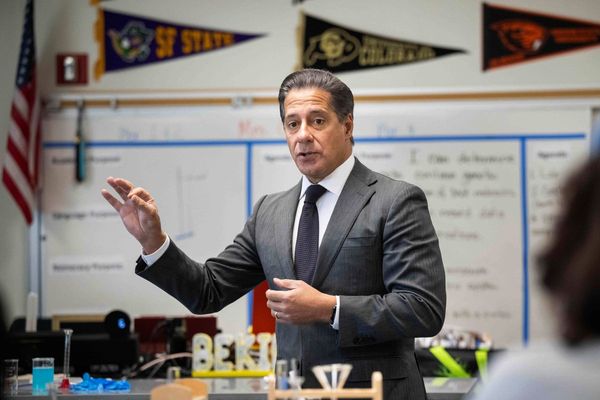
The Albanese government’s decision to allow a 50-50 Covid-related health funding deal with the states to expire will have a “devastating” impact on hospitals, Australia’s peak medical bodies say.
And those at the coalface warn burnout among medical professionals has reached the point that the country’s medical system may never return to its pre-pandemic state.
State health ministers had urged the federal government to continue the temporary pandemic arrangement on Covid-related hospital funding – set to expire on New Years’ Eve – through to 2025, while the Australian Medical Association (AMA) wanted it to be made permanent.
But those hopes were quashed with the release of Tuesday’s budget which, though it contained several new investments in health, will allow the split Covid funding to end even as hospitals prepare for another wave of the virus feared to arrive in coming weeks.
Funding for an additional 10 Medicare-subsidised psychological therapy sessions per year, which took the total number of 20 after being introduced as a pandemic measure, was also not renewed and the temporary measure is set to finish at the end of the year.
But the AMA’s president, Prof Steve Robson, said federal and state co-funding was needed for a hospital system “breaking point” that no longer had the capacity to “surge and meet increased demand”.
“The virus is unlikely to respect a 31 December budget deadline, and if these measures end it will only put more pressure on our already logjammed hospitals,” he said.
And a surge in Covid cases, many experts warn, could be imminent.
Prof Adrian Esterman, the chair of biostatistics at the University of South Australia, said a number of measures in the budget appeared to assume that “Covid is all over”.
“It’s nowhere near all over,” he said.
In fact, he said, there was a “very high probability” of another Covid wave before the end of this year.
“We have declining immunity and new subvariants hitting Australia,” he said. “[It’s] already happening in New Zealand.”
The Australasian College for Emergency Medicine’s president, Dr Clare Skinner, backed the AMA’s calls for an “urgently needed” long-term solution to funding and for the removal of the 6.5% annual growth cap on hospital funding to which the commonwealth is set to return next year.
Skinner urged the commonwealth to match state health funding “until such time that widespread national health reform has ensured the formation of a reimagined health system that is accountable, affordable and accessible for all people in Australia”.
Victoria’s premier, Daniel Andrews, vowed to continue fighting for an ongoing equal split of hospital funding with the commonwealth, while outgoing New South Wales health minister, Brad Hazzard, said “the lack of funding will add to an already massively under pressure system”.
The Victorian Healthcare Association also backed Andrews’ push, saying the decision to cease the 50-50 funding partnership would have a “devastating” impact on the state’s public health system.
“It comes at a time when the Victorian government’s own funding of hospitals does not match inflation, which is rapidly increasing the cost of delivering healthcare to Victorians,” the VHA said.
The College of Emergency Nursing Australasia’s president, Wayne Varndell, said the end of the 50-50 funding arrangement would put Australia’s hospitals on “struggle street” as they floundered to attract frontline workforce to meet patient demand.
Varndell, who works as a clinical nurse consultant in NSW, said the lingering impacts of the pandemic included delayed care, particularly for patients with chronic conditions.
“The pressure on a fatigued workforce is still there,” he said.
Sydney-based haematologist Dr Nada Hamad said that “burnout levels” had led many healthcare workers to question their “willingness to keep going in the system”.
Hamad said it was her feeling the sentiment was not confined to one institution or state, but was “happening across the board”.
“Healthcare, as we knew it [before the pandemic], is not the healthcare we can expect moving forward,” she said.







